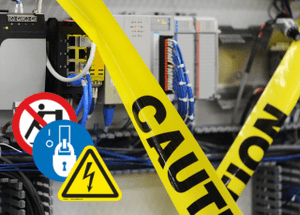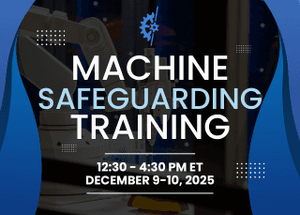How to Minimize Common Electrical Hazards

Electricity can present serious hazards. That’s why, each May, the Electrical Safety Foundation International (ESFI) commemorates National Electrical Safety Month – to raise awareness about critical electrical safety topics. This annual campaign helps to educate key audiences – including homes, schools, communities and workplaces – about steps that can be taken to reduce the number of electrically-related fires, fatalities, injuries, and property loss.
Electrical Safety Month 2025
ESFI's 2025 main campaign focuses on "Lithium Ion Battery Safety", highlighting safety tips in storage and handling for these batteries which keep on growing in use across all industries. The topics that its featured resources cover include:
- Electrical vehicles/chargers
- Solar photovoltaic chargers
- Temporary power safety
- Energy storage systems
- Workplace safety and common electrical hazards
- Home safety and efficiency, including getting homes compliant with the National Electric Code (NEC)
Electrical Codes, Standards and Regulations
While electrical standards and codes like the NEC are important for home safety, they’re even more critical for workplaces. Standards serve as an important foundation for safety, efficiency and interoperability. They’re put into place through safety codes, like the NEC, which sets the minimum standards for safe electrical installation in the U.S. in one single, standardized source. The National Fire Protection Association (NFPA) and the National Electrical Manufacturer's Association (NEMA) are available on a regional basis to support NEC adoption efforts.
At the same time, workplace safety is governed by OSHA regulations, as well by state and local laws, which may be stricter than federal requirements but cannot be more lax. As part of its initiatives to improve electrical safety in the workplace, in the late 1970’s, OSHA requested the NFPA to develop relevant standards that would assist employers and employees in complying with the government’s rules on the operation and maintenance of electrical systems. One of the results: NFPA 70E Standard for Electrical Safety in the Workplace. The NFPA family of codes and standards that deal with electrical issues are comprehensive and dynamic – updated on a regular basis to adapt with evolving industry needs and technological developments. In addition to NFPA 70 National Electrical Code and NFPA 70E, they include NFPA 70B Recommended Practice for Electrical Equipment Maintenance, NFPA 79 for Industrial Machinery, and many more.
Minimizing Electrical Risks
Realistically, when working with electrical equipment, it's not always possible to completely eliminate risks. For example, although it is optimal, in terms of safety, to cut off power to equipment before beginning to work on it, some operations do demand working live. NFPA 70E sets forth a range of risk control options, which starts with the elimination of the risk and ends with using appropriate protective equipment. Other risk-control options include engineering controls that reduce potential harm, as well as awareness and administrative controls. These two latter measures can include providing electrical safety training and appropriate signage and labeling.
Common Electrical Hazards
Electrical shock incidents continue to be a major source of workplace accidents, especially for those in the construction industry. There are several factors that can contribute to the risk of injury or fatality stemming from electricity. Major causes of injury include:
- Faulty equipment or tools. These may suffer from a manufacturing defect; more often, they sustain damage and do not undergo proper inspection and maintenance.
- Failure to properly ground. Electrical safety training should include grounding procedures.
- Overloaded circuits
- Contact with overhead or buried power lines. The high voltage of these lines can make them extremely dangerous. Signs and barriers can reduce risks by preventing non-electrical workers from accessing the area or storing materials in proximity to it.
Lockout/Tagout
A common scenario leading to injury is when a piece of equipment or a line thought to be depowered starts up unexpectedly. Lockout and tagout refers to a set of procedures set forth by OSHA in order to minimize the likelihood of such an occurrence. 8.5% of all electrical fatalities are caused by lockout/tagout procedure failure or related safety control removal.
Employers must establish a procedure for workers to follow before beginning to work on electrical machinery. These steps generally consist of:
- Going through a pre-shutdown checklist
- Shutting down the equipment
- Disconnecting the equipment from its power source (or isolating it)
- Putting a locking device on the disconnected or isolated power source; if the power source cannot be locked, placing a tagout device alerting others to the electrical hazard
- Tagging the lock with the name of the person who placed it so that no one else opens the lock
- Properly handling any potential stored power (typically by releasing or restraining)
- Verifying the equipment has been completely depowered
Some types of machinery can start accumulating stored energy even after this process is followed. When dealing with this type of equipment, it is important to regularly check to make sure this is not happening throughout the duration of the service procedure.
Before removing the lockout or tagout device, workers must check that the machine is safe to power back on. Before actually powering it on, they must follow procedure to apprise others that the machine is about to be powered back on.
Arc Flash Hazards and Risks
An arc flash happens when an electrical discharge flashes between conductors or between a conductor and the ground. They occur very quickly and are likely to cause serious injuries. Common causes of arc flashes include failure to properly depower equipment before working on it, improperly operating a load break switch and tools coming into contact with live components.
In 2021, the NFPA updated its NFPA 70E standard, the internationally accepted American National Standard that defines electrical safety-related work practices. The standard's latest edition includes an updated arc flash table, which helps workers estimate the risk of an arc flash incident.
Workplace Electrical Safety Incidents in Focus
Annually, workers in a broad array of industries continue to suffer injuries on the job due to electrical hazards. Last year in 2024, "lockout/tagout" placed 5th on OSHA's top workplace safety violations list, while "eye and face protection" took the 9th spot. To further highlight the critical need for safe electrical practices in the workplace, here's a snapshot from ESFI of electrical accident statistics.
Fatal Electrical Injuries:
- The latest statistics show that the rate of fatal electrical injuries stayed the same from 2022 to 2023.
- 74% of fatalities were in non-electrical occupations, stressing the need for electrical safety briefing in all fields.
- Primary worker activities that were the source of fatalities: “Constructing, Repairing, Laboring” accounted for the leading worker activity for electrical fatalities at 58%.
Nonfatal Electrical Injuries:
- 2021 and 2022 has 3,620 non-fatal electrical injuries, a 21% decrease from the previous two-year period.
- The sectors that saw the highest number of nonfatal injuries include construction, accommodation and food services, wholesale trade, and manufacturing.
- A majority of injuries were from workers age 25-34 years old.
Machinery and Workplace Safety
Clear, regulation-compliant signs and labels can help employees and those operating or performing maintenance work on equipment to remember their training and follow procedures to avoid danger. Clarion Safety offers a wide range of signs and labels to improve electrical safety and help you comply with relevant standards, codes and regulations. When it comes specifically to arc flash hazards, we offer standard arc flash labels, as well as customized options, including full arc flash serialization and 'variable data' capabilities. We also provide comprehensive machinery safety and risk assessment services, with full-service product safety and liability prevention capabilities, including functional safety and control reliability. Reach out to us to learn how we can help.
This blog was originally posted on 5/13/19 and has been updated with new information throughout.



